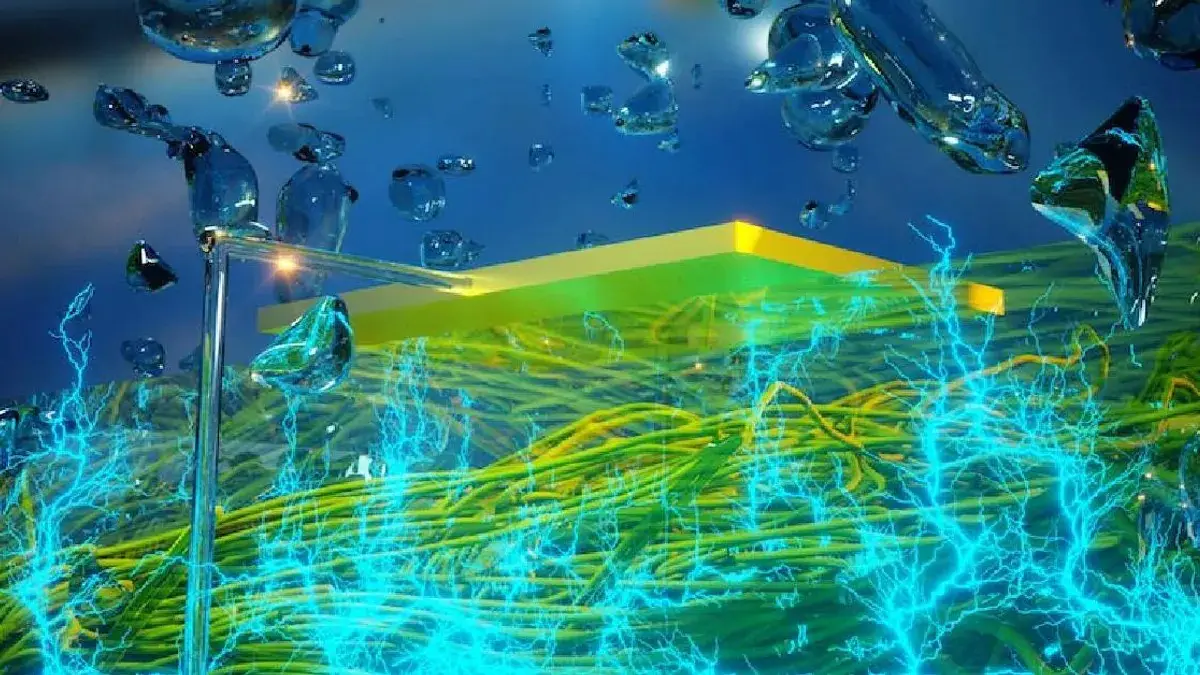Scientists Create A Groundbreaking Device That Generates Electricity Out Of Thin Air
Tags: News

With the current strains on resources and energy, it would be fantastic if someone could produce electricity out of thin air. Interestingly, in 2020, several University of Massachusetts Amherst researchers discovered a device that could do just that.
SUBSCRIBE TO THE TRUTH THEORY YOUTUBE CHANNEL, CLICK HERE
They named this device ‘Air-Gen’ and advertised it in a press release from the University. This device is the brainchild of Jun Yao, an electrical engineer, and Derek Lovley, a microbiologist. The electrical engineer for the project stated that they were literally creating electricity out of thin air. It should also be mentioned that this device is capable of generating clean energy 24/7.
Also Read: RECHARGEABLE BATTERY THAT CAN LAST 400 YEARS ACCIDENTALLY DISCOVERED BY A UNIVERSITY STUDENT
Air-Gen, the Device That Creates Electricity Out Of Thin Air
The Air-Gen device also utilizes a natural protein that manufactures electricity from the moisture in the air. This is mainly because moisture actually consists of a varied amount of electrical discharge. This technology, naturally, is low-cost, non-polluting, as well as renewable. Also, this technology is capable of producing electricity in such regions that have extremely limited humidity- such as the Sahara Desert. Interestingly, this technology is different from other variants of renewable energy such as solar and wind- for Air Gen doesn’t require either of the sources. All the device requires is a thin film of nanowires consisting of protein particles that would be less than 10 microns thick.
In order to create electricity out of thin air, it would be prudent to know how the machine works. The Air-Gen consists of electrodes that support the bottom part of the film. The upper part of the device is also supported by a tiny electrode that manages to cover a minute portion of the nanowire film. The water vapor in the environment gets absorbed by the film present, with added support from the surface chemistry of the nanowires, the conductivity provided by the electrical conduits, and the tiny pores that separate the nanowires inside the film. This manufactures the conditions for any electrical current to start flowing between the electrodes. And this is how the machine creates clean energy 24/7.
How Does Air-Gen Work?
Air-Gen- the machine that creates electricity out of thin air currently has a density of around 17 microamperes per square centimeter. The device also creates and sustains a voltage of around 0.5 volts over a film that is 7-micrometer-thick. As it stands, this is sufficient for most of the new devices to power small electronic devices. Currently, the researchers have been looking towards bringing this invention to a commercial scale- so it could be used by individuals in their many pursuits. Yao went on to mention that the main goal was to introduce it to large-scale systems. The bioengineer thinks that the technology could be brought into wall paint that would help power one’s home. They could also look towards creating air-powered generators that are stand-alone in order to supply electric current off the grid.
The discovery of Air-Gen was created by accident when the bioengineer found out that the devices he was working with had all been conducting electricity by themselves. Yao mentioned that when he checked the devices he found that the nanowires were in contact with the electrodes in such a way that the device generated a current. He also found out that the exposure to atmospheric humidity was absolutely necessary- and the nanowires made of protein were constantly absorbing water which then led to the production of a voltage gradient throughout the device. Any previous research that has been conducted on other nanomaterials has shown power generation through hydrovoltaic cells. Yet, one needs to remember that every attempt has led to only short bursts of electricity- which have lasted for just a few seconds. Air Gen shows promise in being different.
However, how successful the team’s ambitions will be is still a matter of conjecture since there have not been any substantial updates in the past two years.
Image credits: University of Massachusetts
Leave Comment: